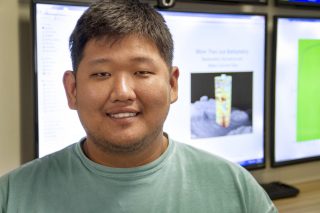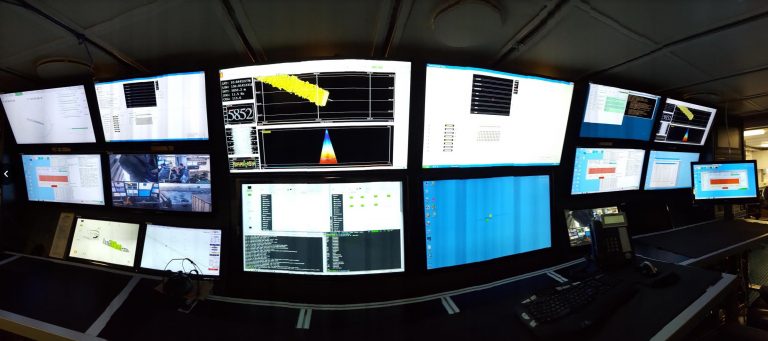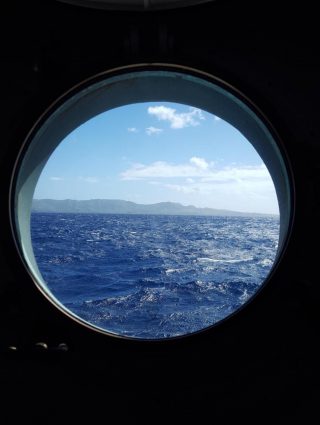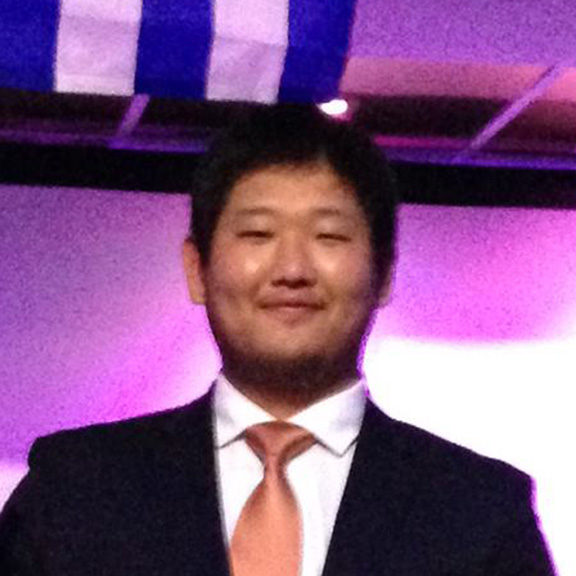
Håfa Adai from the R/V Falkor! My name is Andrew Kang, and I am a graduate student aboard Falkor for the Student Opportunities program as we sail from Guam to Hawai’i. I have never been out at sea for more than a day, so I am not sure what to expect along the way, but I am prepared to learn from the experiences throughout the voyage. I would like to take this opportunity to discuss my background, and in future blogs I will be sharing more about my experiences and the science behind the research as we approach Johnston Atoll.
How I Got Here
I became aware of the Student Opportunities Program during a tour of Falkor this past summer on Guam while the ship was preparing for sea trials with the new ROV SuBastian. I was informed that there would be another cruise later this year, so I applied to participate in this transit cruise in an attempt to gain experience conducting research at sea. It has been hard containing my excitement since I first found out I would be a participant this past July. I am sure my friends and family were sick and tired of me constantly talking about being on the Falkor.
Opportunities such as this one do not present themselves frequently, so I am very thankful to be given this chance. I am really looking forward to working with scientists and marine technicians to gain experience working with the multi-beam sonar mapping technology and magnetometer. I hope to take the skills and knowledge from this research cruise and apply them in my future research interests. Further down my career path, I would like to utilize both deep-sea mapping and genetics in order to locate isolated mesophotic reef ecosystems and study the genetics of organisms found at these depths. I want to assess the genetic similarities of these deep-sea species with those found in shallow, near-shore reefs.

Share!
Another important aspect of the cruise that I am excited about is the outreach opportunities. I will be participating in a ship-to-shore video chat with high-school students on Guam – I really hope to make a positive impact on these students. As an undergraduate at UT-Austin, I realized that sharing your research was a vital aspect of promoting awareness for our oceans. Being from Guam, I would like to connect with the local students on a personal level in regards to promoting sustainability and awareness. Outreach is important to me because it gives me a chance to excite someone the same way the ocean excites me. Being from an island, we rely heavily on the ocean for our food and climate. Therefore, if I can motivate a high school student from Guam and guide them towards studying the ocean, then there is a greater chance that we can work together to improve our island and conserve our marine resources.

It has only been a day since we left Guam but I am grateful that the other people aboard are so friendly and kind-hearted. I believe it is important in confined spaces, such as a research vessel, to have a comfortable and positive atmosphere where everyone can put forth their best effort. One of the things that has stuck with me since we departed is the collaborative effort component of this research. In science, it is important to work with others towards a common goal. As I write this blog from the dry lab, I constantly see and hear the marine technicians and researchers conversing with each other, familiarizing one another with the equipment and analysis programs in the science control room. Furthermore, the data collected from this cruise will be used to better inform future cruises (such as the NOAA’s Okeanos Explorer) so that researchers can input more resources into collecting data and making new discoveries.

